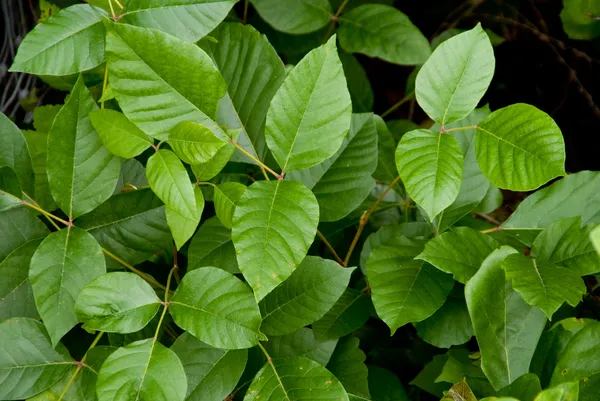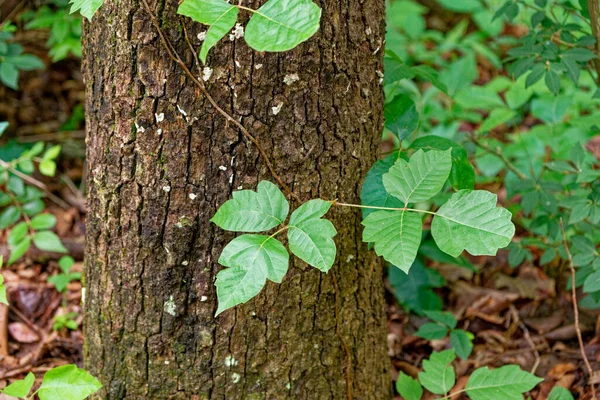Share this @internewscast.com
How to Identify a Poison Ivy Rash: Poison ivy is a widespread plant known for inducing a very itchy and uncomfortable rash on the skin. Being able to identify poison ivy, recognize the rash symptoms, treat it successfully at home, and knowing when to consult a doctor are crucial steps in dealing with this allergic reaction. This guide offers a thorough explanation to assist you in confidently managing encounters with poison ivy.

What Does Poison Ivy Look Like?
Poison ivy can grow as a vine or a small shrub, typically found in forests, gardens, and parks. Its leaves usually come in clusters of three, reminding you of the saying: “Leaves of three, let it be.” The foliage changes color throughout the year, appearing red in spring, green in summer, and either yellow, orange, or red in autumn. The plant may also have greenish-white flowers and light yellow or white berries. These features can help in identification, yet caution is necessary as it may resemble other plants.
Signs Your Rash Might Be Poison Ivy
The rash associated with poison ivy stems from an allergic reaction to urushiol, a sticky oil present in its leaves, stems, and roots. The symptoms can manifest a few hours to a few days post-exposure, varying if it is a first-time or a repeated exposure. Typical symptoms include:
- Redness, often in streaks or lines where the plant brushed the skin
- Intense itching and burning sensations
- Raised bumps or flushed, itchy patches
- Blistering that may leak fluid and eventually crust over
- Swelling, particularly in more severe reactions
The rash typically develops in a pattern reflecting the contact area and can last two to three weeks, gradually fading as blisters dry up.
How to Treat Poison Ivy Rash at Home
Most poison ivy rashes are mild and can be managed with self-care. Immediate and thorough washing of the skin with lukewarm, soapy water can help remove urushiol oil and prevent the rash from spreading. It is equally important to wash clothing, shoes, tools, and pets that might have come into contact with the plant to avoid re-exposure.
Effective home treatments include:
- Applying over-the-counter cortisone creams or ointments like hydrocortisone to reduce inflammation
- Using calamine lotion or creams containing menthol to soothe itching and dry out blisters
- Taking oral antihistamines such as diphenhydramine (Benadryl) or loratadine (Claritin) to alleviate itching and help with sleep
- Soaking in cool baths with baking soda or oatmeal-based products to calm irritated skin
- Applying cool, wet compresses for 15 to 30 minutes several times a day to reduce swelling and itching
Avoid scratching the rash to prevent infection, which can complicate healing.
Natural Remedies for Poison Ivy Relief
In addition to conventional treatments, several natural remedies may provide relief:
- Rubbing alcohol wipes can remove urushiol oil if applied promptly after exposure
- Witch hazel has astringent properties that may reduce itching and inflammation
- A paste made of baking soda and water (3:1 ratio) applied to the rash can help dry it out
- Aloe vera gel and cucumber slices may soothe the skin and promote healing
- Apple cider vinegar is sometimes used to dry out blisters and reduce itching, though scientific evidence is limited
These remedies can complement standard treatments but should be used cautiously, especially on sensitive skin.
When to See a Doctor for Poison Ivy
While most cases resolve with home care, certain situations warrant medical attention:
- Rash covers a large portion of the body or is on sensitive areas such as the face, genitals, or around the eyes
- Severe swelling or blistering occurs
- Signs of infection appear, including increased redness, warmth, pain, or pus
- Difficulty breathing, swallowing, or swelling of the face, which could indicate a serious allergic reaction
- Itching becomes unbearable or disrupts sleep significantly
- Rash does not improve after 7 to 10 days of home treatment
In these cases, a healthcare provider may prescribe oral corticosteroids like prednisone to reduce inflammation or antibiotics if an infection develops. Prompt professional care can prevent complications and speed recovery.
Can You Prevent Poison Ivy Rashes?
Prevention focuses on avoiding contact with the plant and minimizing exposure to urushiol oil. Practical tips include:
- Learning to identify poison ivy and staying clear of it during outdoor activities
- Wearing protective clothing such as long sleeves, pants, boots, and gloves when in areas where poison ivy grows
- Using barrier creams designed to block urushiol absorption on the skin
- Washing skin, clothing, and gear promptly after potential exposure
- Never burning poison ivy plants, as inhaling the smoke can cause severe respiratory reactions
By taking these precautions, you can significantly reduce the risk of developing a poison ivy rash.
In summary, poison ivy rash is a common but manageable allergic reaction. Recognizing the plant and rash symptoms, applying timely and appropriate treatments, and knowing when to seek medical care are key to minimizing discomfort and complications. With proper care and prevention, you can enjoy the outdoors while keeping poison ivy at bay.
Also Read | Say Goodbye to Toenail Fungus: Expert-Approved Home Solutions You Can Try Today
Soundhealthandlastingwealth.com offer the most up-to-date information from top experts, new research, and health agencies, but our content is not meant to be a substitute for professional guidance. When it comes to the medication you’re taking or any other health questions you have, always consult your healthcare provider directly.
















